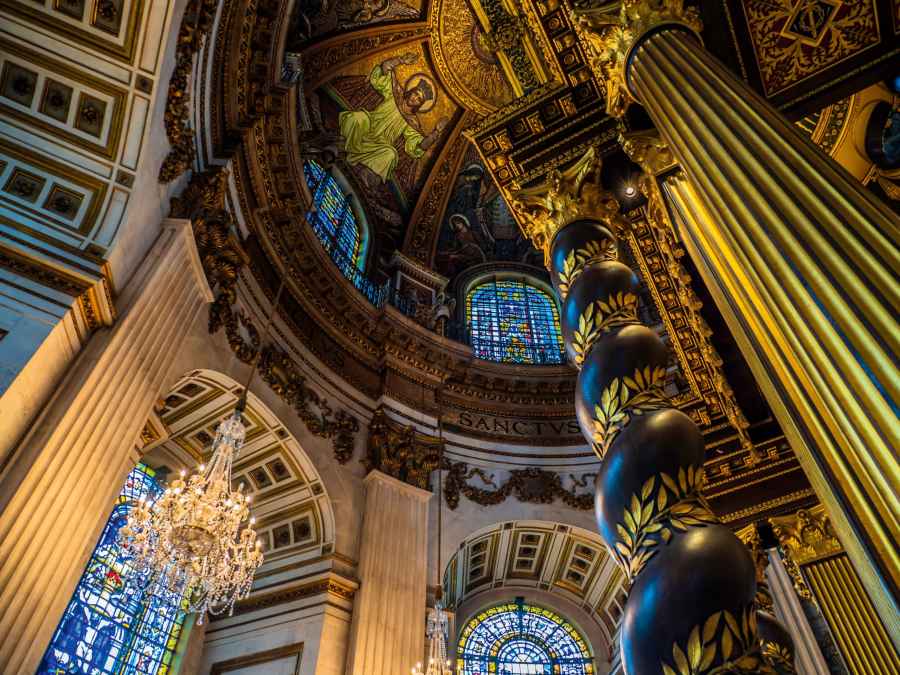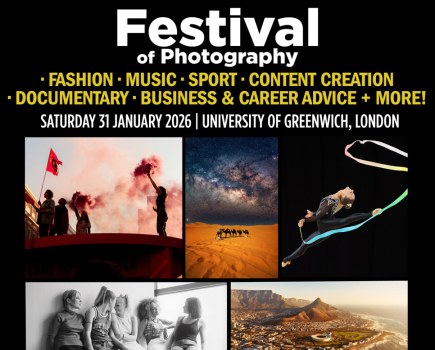
Your guide: Derek Foss
Derek has organised over 250 photographic trips for HF Holidays and today using Olympus OM-D cameras, his images are reproduced in books and magazines. His YouTube channel has more than 150 productions. Visit his website to find out more, and an accompanying video on YouTube.
I am not a churchgoer, but I sang in my local choir as a boy soprano. It is this experience that subconsciously shaped my interest in church architecture. Although intended to worship the Almighty, church architecture may also be viewed as works of art to be enjoyed by everyone, spanning 1,000 years from the Norman Conquest to the present day. Photographically they are challenging subjects, not necessarily requiring a plethora of gear. Less is more, is the answer.
I use the Olympus OM-D E-M1 Mark II plus the 12-100mm Pro lens. A tripod could be mandatory but in some churches they are not allowed, so it’s time to resurrect some handholding techniques. My camera has image stabilisers in both lens and camera that work in tandem, removing the need for a tripod. The maximum aperture is f/4 and constant throughout its 8½ times zoom range, but even at ISO 200, the two stabilisers allow me to take sharp handheld photographs up to ½ second. I could also lean on a pillar or place the camera on a chair or font when no one is looking!

Above: The stunning design of the High Altar in St Paul’s Cathedral, London Olympus OM-D E-M1 Mark II, 12-100mm, 1/15sec at f/4, ISO 200
Apart from image sharpness, the other difficulty is dynamic range, even on a dull day. If a window is present it will be rendered brighter than the surrounding walls overexposing it. Camera technique on its own does not solve the problem, but if you combine those skills with post-production techniques then balancing the exposure is possible.
I am not an enthusiast of HDR, it smacks of ‘instant gratification’. I achieve absolute control with products such as Adobe Lightroom and Photoshop, which can be undone if everything goes pear-shaped! Furthermore, most HDR images require tripod support, but the OM-D E-M1 Mark II with the 12-100mm Pro lens can be handheld.
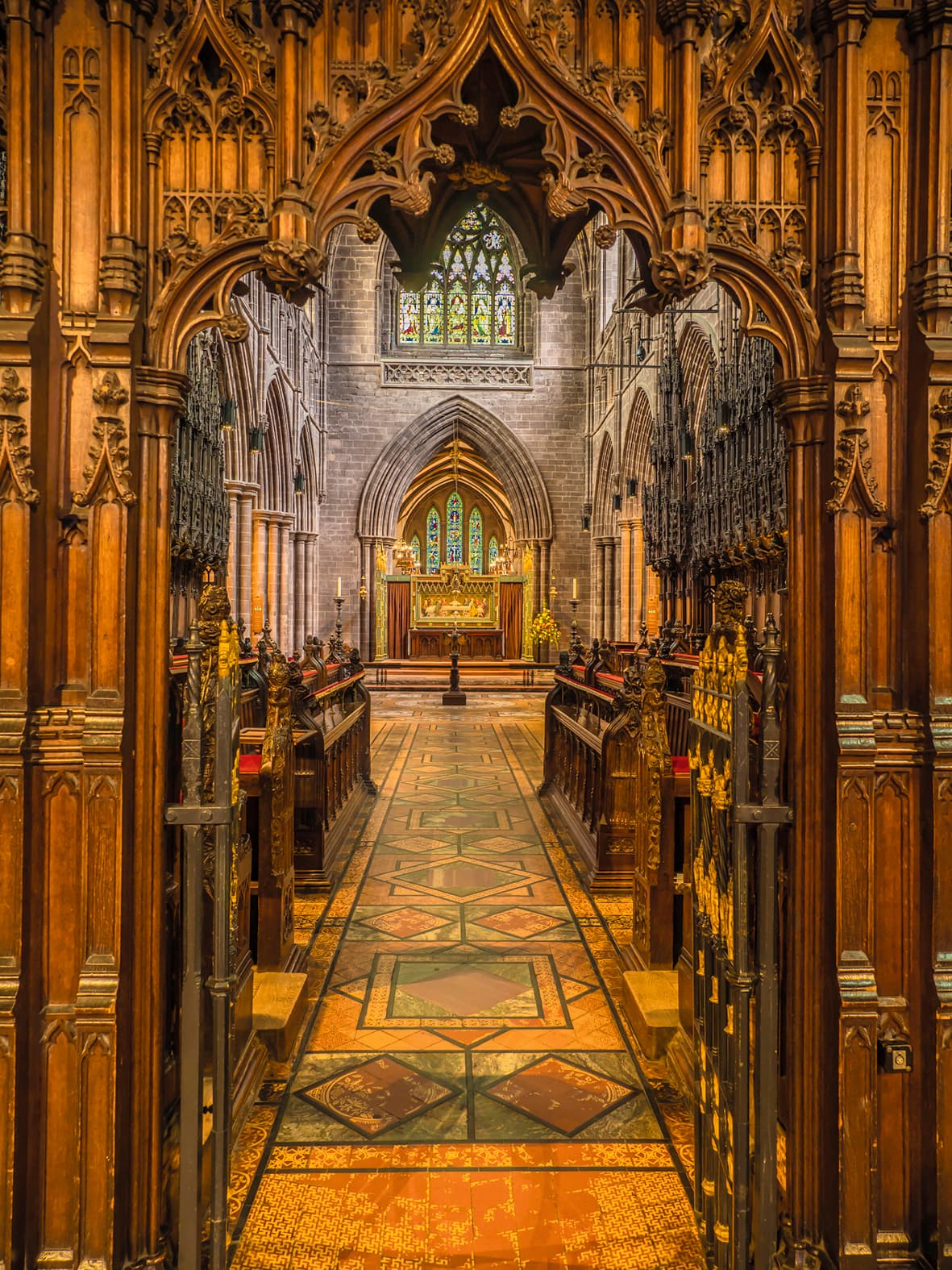
Right: Observation of the Quire at Chester Cathedral Olympus OM-D E-M1 Mark II, 12-100mm, 1/6sec at f/4, ISO 200
Images of a high dynamic range require precise metering, but matrix and ESP are not sufficiently accurate. For complete control I use spot. Changes in exposure can be previewed in an electronic viewfinder but not an optical one. My camera has the useful facility where exposure and focusing can be locked by half-depressing the shutter button on single autofocus.

Light flooding through Chester Cathedral Cloister
By panning across the scene I use the electronic finder to find the best exposure even if it is not the right composition. Half-depress the shutter button to lock and move to the correct view before fully depressing. It requires practice; I meter everything this way with post-production in mind and if the focusing point is different to exposure, I detach autofocus. Inside a church I select a mid-exposure point erring towards underexposure, and correct overexposed highlights and underexposed shadows in Lightroom.

Multi-coloured marble inside Studley Royal, St Mary’s Church
I also use Lightroom to correct converging verticals. They are fine if the floor is absent, otherwise the building looks as if it is about to fall over. Make sure the degree of convergence is symmetric and not too much. Because of low light, maintaining sufficient depth of field is tricky. If tripod mounted, use a long shutter speed to increase depth of field with a small aperture. When handholding increase the ISO value instead. Image stabilisers are a boon. I have two: one in camera, the other in lens. That is how all of my images were taken, handheld with the added help of the hyperfocal distance.
This is a traditional technique swamped by computerisation. Depth of field extends twice as much behind the focus point than in front, therefore you manually focus about a third of the way into the scene for more depth of field. This can be extended with a wideangle lens, reduced with a telephoto. Furthermore, Micro Four Thirds and formats smaller than full frame will give more depth of field at any setting because the focal lengths of their lenses are shorter. Differential focusing is still possible with Micro Four Thirds if you understand traditional photography techniques!
Wideangle lenses give the greatest depth of field and super-wideangle optics, such as the Zuiko 7-14mm, offer an incredible dramatic perspective, but don’t overlook detail. Here I consider decorative organ cases, screens separating the chancel from the nave, decorative details such as capitals, ancient wall paintings and of course, the immediate attraction of stained-glass.
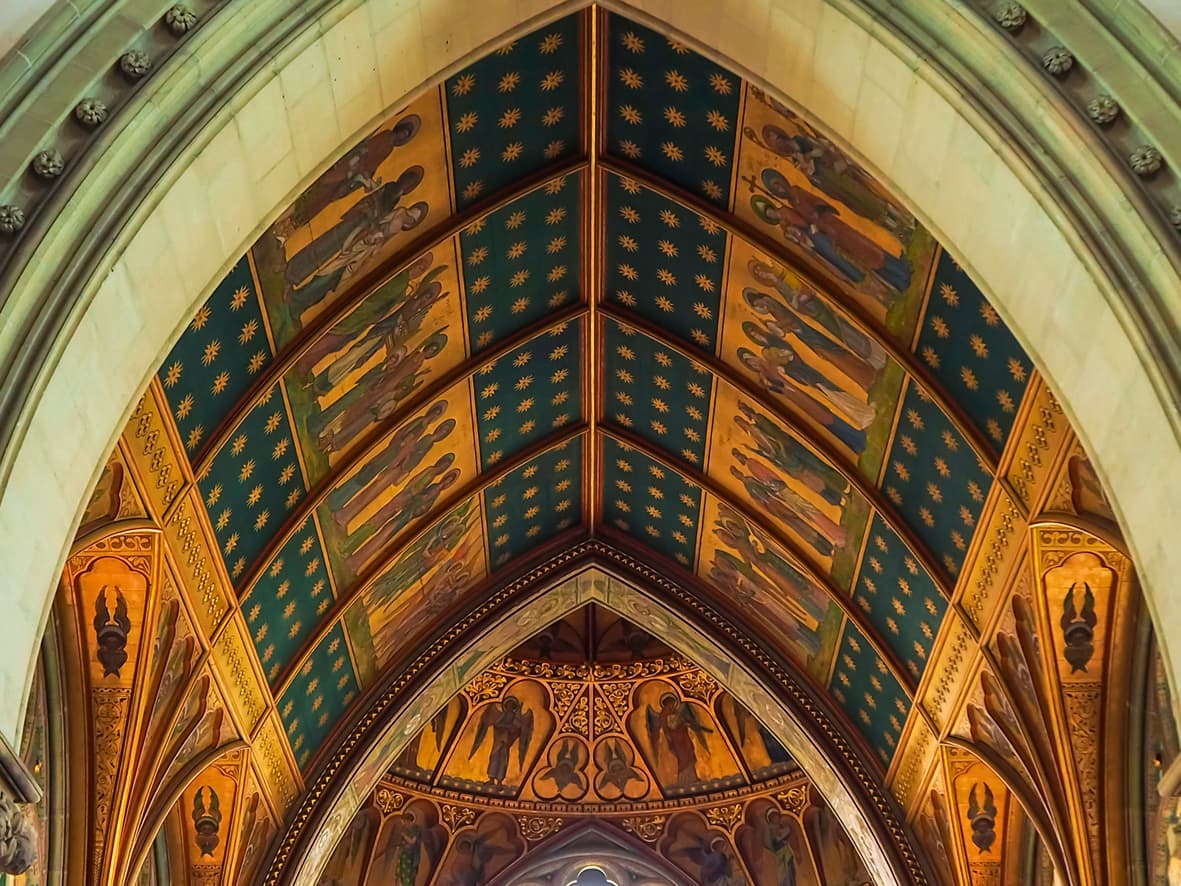
Flamboyant decoration designed by William Burges
An argument against photographing stained-glass windows is that it is someone else’s work, particularly if it is a straight record, yet exposure is surprisingly difficult. They have a high dynamic range and where dark hues mix with light colours, it is too easy to overexpose the latter, especially faces. As an advocacy of spot-metering, I meter a highlight allowing the dark colours to be rendered underexposed and corrected in Lightroom.
Noise should not be a problem because the exposure difference between highlights and dark hues is not much but is sufficient to obscure facial detail if not controlled. If you wish to avoid converging verticals without resorting to software, use a tripod and move further away from the window,
using a telephoto lens so that the angle of tilt is reduced.

Exterior shot of St Mary’s at Cerne Abbas in Dorset
I am only able to give an overview in this feature to this endlessly fascinating subject. However, please remember that these are places of worship, but opened at certain times as tourist attractions. Therefore consult websites before you travel to check when you can go, and to check charges for admission, and photography and tripod permission. Spend the whole day at your chosen location if you can, to witness the changing light. If you don’t want people in your shots, try early morning or late afternoon, but many visitors seem to get hungry around lunchtime and I also find that their cafes are irresistible!

Glasgow Cathedral, also known as St Mungo’s, is an excellent example of Scottish Gothic architecture Olympus OM-D E-M1 Mark II, 12-200mm, 1/4sec at f/3.5, ISO 200
Kit list for quality church shots
Stabilisation
If permitted, a sturdy tripod is useful to have. If not, a camera or lens with image stabilisation. Both my Olympus OM-D E-M1 Mark II camera and Zuiko 12-100mm f/4 constant aperture pro lens have stabilisers and can be handheld successfully at shutter speeds unthinkable a few years ago.
Selection of lenses
Zoom lens over midrange for general work or specialist lenses such as extreme wideangle for dramatic perspectives or powerful telephoto for ceilings when using a tripod. Wide-aperture prime lenses are ideal for handholding.
Software
Adobe Lightroom or Photoshop for image adjustments, but any software that allows you to at least make raw adjustments will do.

The circular interior at St Chad’s Church in Shrewsbury, Shropshire Olympus OM-D E-M1, 9-18mm, 1/30sec at f/4, ISO 200
10 simple steps for better church shots
1 For handholding, check that the image stabiliser in-camera and/or lens are switched on. Switch off for tripod use.
2 Save to raw for more flexibility in post-production.
3 Select Aperture Priority and set the widest aperture available. In Program mode, the camera should default to the widest aperture according to
light intensity.
4 Because of mixed lighting – daylight, fluorescent, spotlight – it is safer to put White Balance on Auto and adjust in post-production. Although this doesn’t work so easily when saving to JPEG.
5 Manually focus about one-third into your composition for hyperfocal distance. Doesn’t matter if there is nothing to focus on, use the lens focusing scale if it has one. In its absence, tweak the focus by guesswork (and experience) back a bit from infinity to around 50 feet.
6 Keep to ISO as low as possible for the best quality. I only raise ISO when necessary.
7 Don’t use any accessory optic, such as filters or tele-convertors, that will reduce the amount of light reaching
the sensor.
8 Spot-meter highlight or mid-tone. Option: Underexpose by -0.3EV, as overexposed highlights are more difficult to correct in post-production. Keep an eye on shutter speed in viewfinder. I can handhold at shutter speeds up to ¼ second, possibly longer. Not so critical when tripod mounted.
9 Decide on composition before taking a shot. Compose yourself, breathe in and hold breath, press shutter-button in one smooth action without hesitating, breathe out.
10 Remember to keep an eye on other people (and photographers) walking into shot.
Post-production workflow in Lightroom
When saving to JPEG, the camera produces an image with adjustments made in-camera that could be difficult to change later. When saving to raw this is bypassed. Changes are carried out in Photoshop, Lightroom, or similar application with the added luxury that it can be undone or changed six months later. This is my procedure for Lightroom. There is no hard and fast rule, every image is different. The best arbiter for making the right decision are your eyes.
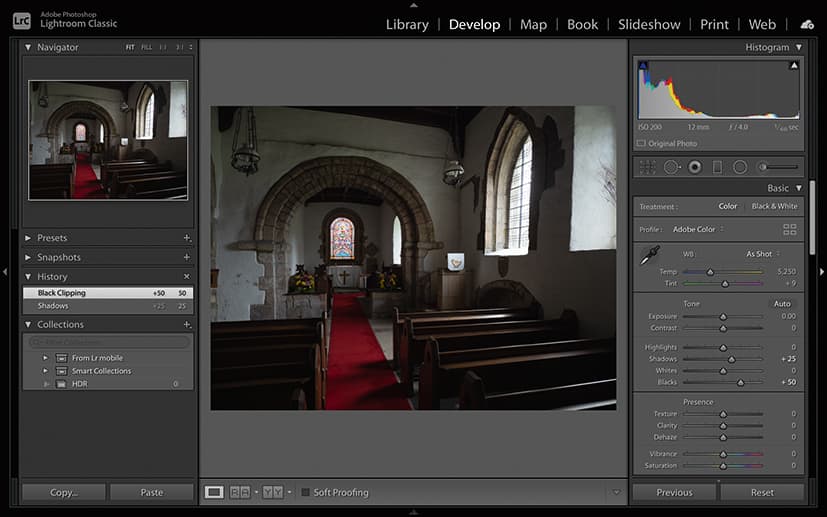
1 Increase shadow detail
For this example, I opened my image in Adobe Lightroom to make some basic exposure adjustments. I increased the Shadows and Blacks to bring out more detail. If you increase these settings too much, you will start to introduce noise.
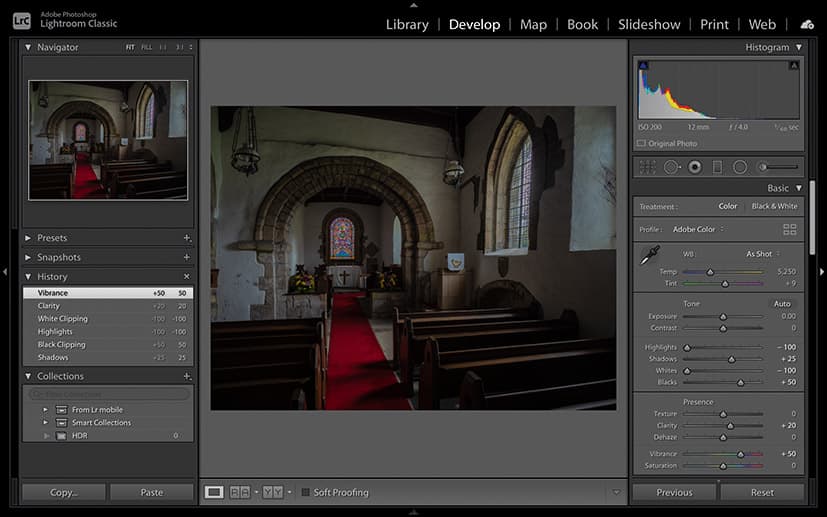
2 Boost colour
Next I reduced the Highlights and Whites to restore the colour in the stained-glass window. To add a bit of punch and saturation, I increased the Exposure, Contrast, Clarity and Vibrance sliders. It’s easy to overdo it so keep checking the original. Less is more.
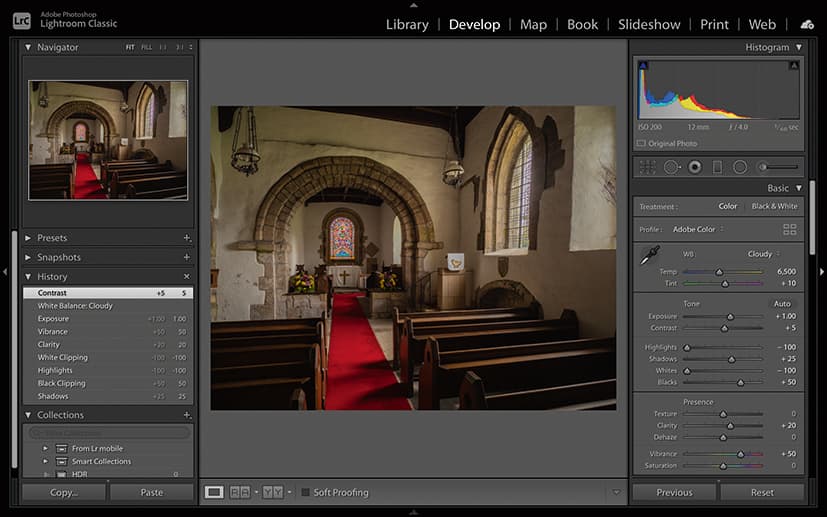
3 White Balance
To adjust the white balance, I usually start by seeing what the white balance presets have to offer and if they don’t look quite right, I will tweak the Temperature and Tint sliders.

4 Perspective
To correct perspective, see what the presets have to offer. For more control, use the sliders to make more accurate adjustments. Transfer to Photoshop for adjustments that cannot be done in Lightroom.
Where to visit
Churches with unusual or singular features:
Church of St Michael and All Angels, Berwick, East Sussex
20th century paintings by the Bloomsbury Artists.
St Giles Church, Cheadle, Staffordshire
Pugin interior, amazing decorations.
St Michael’s Church, Llanyblodwell, Shropshire
Eccentric OTT interior decorations.
St Chad’s Church, Shewsbury, Shropshire
Circular church.
St Botolph’s Church, Hardham, West Sussex
Adam & Eve 12th-century wall paintings.
St Mary’s Church, Painswick, Gloucestershire
Has 99 yew trees. Tradition states that if a 100th is planted, it will die.
Recommended locations
Nave ceiling – Ely and Exeter Cathedrals
Quire – Chester and Peterborough Cathedrals, St Paul’s Cathedral London
Fan vaulting – King’s College Chapel Cambridge, Gloucester Cathedral cloisters and Peterborough Cathedral retrochoir
Norman architecture – Durham and Rochester Cathedrals, St Mary and St David’s Church Kilpeck Herefordshire
Reredos – St Albans Abbey Cathedral, Winchester and Chichester Cathedrals
Stained glass – All Saints’ Church Tudeley Kent (Marc Chagall glass), St Mary’s Church Fairford Gloucestershire (Medieval glass), Canterbury Cathedral and York Minster, Birmingham Cathedral (Burne-Jones windows)
Decorative carving – Ely Cathedral Chantry Chapels and Southwell Minster Chapter House, Beverley Minster West Front
Wall painting – St Botolph’s Church Hardham, near Pulborough, West Sussex, St Peter and St Paul’s Church Pickering North Yorkshire
Setting – Salisbury and Durham Cathedrals, St Michael’s Church Brentor Devon
Overall – Lincoln and Ely Cathedrals, Beverley Minster East Yorkshire
NB: This has been compiled at the time of COVID-19, which has forced the closure of many churches. Parish churches may only open at limited times for prayer and cathedrals with restricted access. Check websites first before travel by Googling their names.

